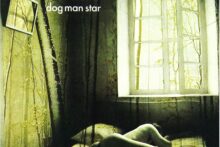Ian Wade travels back three decades to the song that blew the Adidas socks off Britpop, a defiant moment in which Bernard Butler and David McAlmont transcended their pasts with what became a queer anthem
Time is a bastard, isn’t it? You’re happily just going about your life and filling the days and then suddenly you’re greeted with the realisation that you are indeed a fossil, and a song you thought must be at least maybe ten years old came out three decades ago. Take McAlmont & Butler’s Incredible ‘Yes’ for example. First released 15 May, 1995 – a week older than Pulp’s ‘Common People’, another song that can’t possibly be 30 – even then ‘Yes’ had the ability to sound both old and new at the same time. As a result, it has almost failed to date or age in the way pop music is apparently supposed to.
So why is ‘Yes’ so incredible? It’s the ultimate ‘fuck you’. It’s empowering. It’s the song you want to hear as you bin off an ex who has done you wrong, betrayed you, gone off and done something behind your back – or maybe even right in front of you. David McAlmont sings how you feel. He has lived it. He’s telling the tale. And he’s got Bernard Butler to back him up, and Butler has conjured up a whirl of classy bombast to help deliver his righteousness.
You almost feel that McAlmont is conveying what Bernard Butler wants to say: “Yes, I do feel better” – is that directed at Brett Anderson, after the guitarist’s tumultuous time in Suede, the band he had quit / been sacked by the previous year. It could equally be directed at McAlmont’s exes in his band Thieves, an outfit that pretty much hung on his ability to peacock from the pages of the weeklies. It had all gone to shit before an album was even finished. For Butler, the stakes were a little higher. He’d been the surge and charge of Suede’s first two albums, but the making of Dog Man Star, the demands of being in one of the most media-surveilled groups of the era, and the dreaded combination of ego and drugs combined with personal grief after his dad died, had sent him spiralling. ‘Yes’ is the sound of two people revelling in their new-found escape.
‘Yes’ was the first piece of music Butler had written post-Suede during a period growing obsessed with Dusty Springfield and Phil Spector. He’d touted it around to several singers including one, who he teasingly wouldn’t name, who demanded to change literally everything about it. He did however work with Julianne Regan, of All About Eve fame, under the name Mrs Decorating Bike, and a demo of a pre-‘Yes’ entitled ‘What The Girl Should Do?’ popped up online a couple of years ago. Butler met McAlmont at the Jazz Café in Camden, and asked if he fancied doing something with this piece of music. Two days later the singer had a first verse but not a second. Possibly having had his fill of dealing with Anderson taking his sweet time conjuring up a worldview of dystopian uncle-bumming on glue (or something), Butler simply told him to sing the first one again.
That’s the beauty of the lyrics to ‘Yes’ – there’s no embellishment. The pair of them had every right to vent fury and anger over their showbiz exes, but there are no coded references to any of their past musical partners. Instead, they’re direct and to the point. Nothing particularly poetic, but plain, direct conversational everyday truth. You could quote those to someone who doesn’t know the song and they’d think that it was merely a sassy, perhaps slightly aggressive, chat. Obviously if they’re unaware of ‘Yes’, then you’re well shot of them anyway, but that’s by the by. This economical lyricism – a verse, a chorus and an adlib – helps ‘Yes’’ case for greatness even further. And that where the gays come in.
While they may have had ex-musical partners in mind, the main bulk of the purchasers who clasped ‘Yes’ to their hearts could easily imagine that McAlmont was singing it to a man. While songs about exes are commonplace throughout pop’s history, and there’s even been a few that have addressed male relationships, just by being McAlmont there was an audience who could immediately relate. McAlmont was very gay. Very out. Very there, irrespective of what any audience made of him. He so clearly gave no fucks whatsoever. By channelling the elegant fury of the done-wrong divas of yore, McAlmont is serving Dusty, Diana and drama. He has the poise and presence of the big-haired lungsmiths, like an indie Sylvester or boa-free Bassey, never breaking sweat as he delivers every performance effortlessly.
Mainstream audiences at the time were possibly a little baffled, but for queer indie kids who lived for the Suede front covers and whatnot, they knew. The baggage that Butler had at that time, and his role in Suede adding fire and drama, saw a readymade crowd wanting to hear his next move.
It has long been argued that Britpop was some kind of lad’s club of beer and Loaded and the like, but gay people had located the strands of queerness running throughout that period: The ‘is he/ isn’t he’ otherness of early Suede; the nylon, desperate outsider anthems of Pulp; the slight nod from Blur’s ‘Girls & Boys’; the tomboyish Elastica; the culture slut panda-dyed androgyny of Richey-era Manics or the welcome-all kaleidoscope pop of Saint Etienne. All of these acts had something more to offer a gay indie fan than, say, The Stone Roses ever did.
But also, there were club nights springing up where gay people who weren’t interested in tops-off Trade escapades or a spot of knob-touch in some sex club were increasingly welcome. No more patiently waiting through the overplayed parade of ‘Sit Down’ or ‘The Only One I Know’ or ‘Step On’ or ‘Loaded’ for a brief glimpse of ‘Metal Mickey’ or even some Smiths. Duckie, Popstarz, Retro Bar, Smashing and the like came along, all run on the ethos of pop music sounding brilliant when heard loud, and catered for those who didn’t necessarily venn into the stereotypes. These were places that broadened their remit to allow the pop of Take That, Kylie and East 17 or the spritz of handbag bangers by two-hit wonder dance troupes like Livin’ Joy or Baby D in. Or in the case of Duckie, where the Stranglers and Blondie were just as important as S’Express and Boney M. You no longer needed to enter a local gay pub and suffer tin-thin homo-pumpers and Almighty-adorned cover versions mimed to by a basic drag queen. Play ‘Yes’ next to ‘Country House’ or ‘Roll With It’ and it outclasses them both with scale and panache.
Another key element in ‘Yes’ was the strings. Butler is by no means reduced to an orchestra member either, as you can hear an almost joyous freewheeling heaviosity churning among the melee. Those dizzying, ecstatic strings that feel euphoric, arms-aloft-y, jubilant and majestic, driving everything, at war with the drums. The key figure here was producer Mike Hedges, who’d been around a bit and whose productions oomphed the careers of The Cure and U2 as well as producing Everything But The Girl’s classic Baby The Stars Shine Bright, which I recently discovered via a post from Tracey Thorn, was the album that the Manics cited as an inspiration in their choice of working with him on Everything Must Go. Incidentally, imagine the title track of Everything Must Go done by McAlmont & Butler. Exactly. It’s effectively ‘Yes’. You’re welcome.
Although it is regularly cited as one of the greatest singles of the era, ‘Yes’ is hardly overplayed on the radio. There are approximately 30 other singles from 1995 that will get chosen before ‘Yes’ gets an airing. If you find yourself faced with the ordeal that is indie lad radio, you’re more likely to hear ‘Mr Brightside’ 50 times before a glimpse of ‘Yes’. Perhaps that’s why it has retained its magic after all these years. It is lightning in a bottle, a once in a lifetime curiosity. And when it does turn up unannounced the spirits immediately lift, the light beams through the window and for those four minutes or so, you’re transported and reminded of the magic of pop music. When you watch footage of ‘Yes’ on Top of the Pops, McAlmont is his effortless self but Butler looks almost bouncy, giddy and free from having to serve pose and commit to the aesthetic of his past.
Of course, McAlmont & Butler couldn’t last, and after another single, ‘You Do’, they called it a day. There were murmurs of a falling out, but they eventually reconciled and recorded another album, Bring It Back, in 2002. Sporadic singles followed such as 2006’s ‘Speed’, which came from the sessions from a proposed third album that fell at the hurdle of being dropped by EMI. It is still mooted to turn up at some point.
Speaking to the James McMahon podcast in 2022, McAlmont was touched but had no idea why ‘Yes’ had connected the way it had, “A gentleman came up to me and spoke about his trans daughter,” he said. “Apparently my music had been really powerful in her transition. I’ve had people say that they couldn’t get out of their wheelchair until they heard that song. Or leave bad relationships. It’s very moving to hear.”
“It’s one of the highlights of my working life, sitting in the studio with [Bernard] watching him play,” McAlmont continued. “Before he played me the song, all those years ago, he said he’d been listening to lots of Dusty Springfield, and I can hear that in it. I took the record home and did some work on it, but I don’t know what I did. I’ve heard people say it’s uplifting, but whatever I did, I’ve never done it again!”
But it happened. ‘Yes’ was a mercurial jewel that erupted out of and into a musical landscape that was gradually trying to knock any nuance or flamboyance out of what had come before. That it towered over all of that, both then and now, gives it a timelessness that is all too often hard to repeat.






